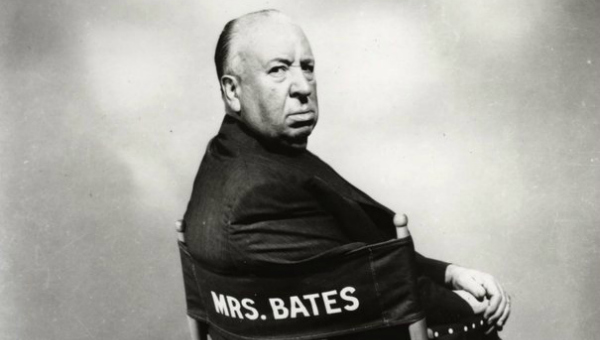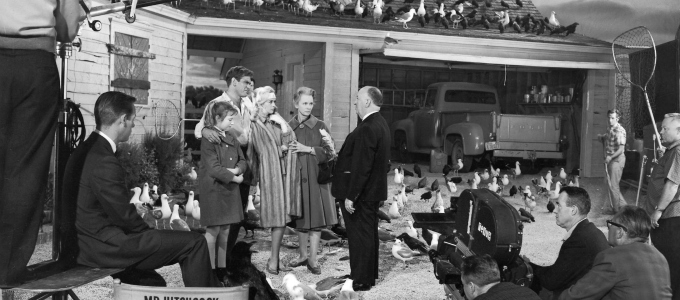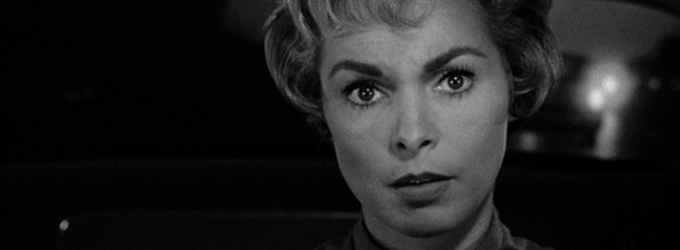The life and work of British-born film director Alfred Hitchcock is currently being celebrated at the British Film Institute, with special screenings featuring on the Cambridge Film Festival programme this year. Although certain Hitchcock films which rely heavily on the unrefined special effects that were available at the time, such as THE BIRDS, have aged less gracefully than some of his other films, his works continue to be hugely influential, with VERTIGO topping the BFI’s all-time greatest film list this year.
What continues to separate Hitchcock from a multitude of contemporary directors is his relentless exploration of human limitations – those of his characters, as well as those of his audience. A recurring thread throughout his films – in addition to his penchant for exceptionally glamorous blonde women – seems to be that of the effects and dangers of suppression; an idea seen through the literal and metaphorical image of the caged bird. This sense of entrapment fills PSYCHO, VERTIGO and, more evidently, THE BIRDS; and whether the caged bird serves as a potential emblem for enforced limits in society as a whole, or as a warning of the dangers of manipulating a specific individual, it creates an unusual power balance which allows Hitchcock to construct the scenes of extreme suspense for which he is lauded.
While Hitchcock is progressive in other aspects of his film-making, his portrayal of women remains stereotypically subservient.
For Hitchcock’s women, this idea of being on display yet not entirely free has certain parallels with their own roles. While Melanie Daniels (Tippi Hedren) in THE BIRDS has a strong role to play as a protagonist, we rarely see her looking less than immaculate, and she has the continued physical and emotional support of Mitch Brenner (Rod Taylor) in times of need, which suggests she still embodies certain traditional social expectations of women despite her headstrong, vaguely obsessive attitude towards Mitch. Indeed, each female role embodied in THE BIRDS is very much an archetypal position; Lydia (Jessica Tandy) the ever-present doting mother, Melanie the flighty lover and Annie Hayworth (Suzanne Pleshette) the bitter former partner. While Hitchcock is progressive in other aspects of his film-making, his portrayal of women remains stereotypically subservient. This is taken to an unusual, unsettling extreme in VERTIGO, where the uncomfortable transformation of Judy Barton (Kim Novak) into Madeleine Elster (Novak) comes as the result of a sinister whim forced upon her by Scottie (James Stewart). Although the audience’s sympathy felt for Judy does wane as her true identity and intentions are unravelled, her position as the plaything of a man is poignant and troubling.
Such an abuse of power is, however, no more evident and horrifying than in PSYCHO. While Marion Crane (Janet Leigh) is very much an assertive, modern-day woman in her unusually bold lunchtime rendez-vous with her lover, she nonetheless falls prey to the disturbed Norman Bates (Anthony Perkins). This is an indicator, though, that Hitchcock’s men do not completely escape the firing line, as they are used to explore the limitations felt through other forces. For Scottie in VERTIGO and Norman in PSYCHO, they are entirely at the mercy of their own mental equilibrium. In removing the characters’ control over their actions, Hitchcock conjures unpredictable yet determined protagonists to carry his story: a combination which proves threatening to the other characters and the audience alike.
The lack of control of these unsettled men is taken to an unprecedented extreme through the dominance of nature over man in THE BIRDS, where unusually, any sense of pre-meditated intention and action is absent in the major sections of the film. The uncertainty, tension and continual threat created by this state of fear mean that both the audience and the characters must respond to the world around them precisely as it unfolds. As such, a dependence on a higher power to carry the story forward is created, putting both groups entirely in the palm of Hitchcock’s hand and allowing him to explore moments of unbearable suspense.
… the paltry amount of music used in THE BIRDS highlights the innocence and beauty of the film’s subjects …
Hitchcock further propels his suspense with his inspired choices of musical scoring – or absence thereof. While VERTIGO and PSYCHO both make use of a complete, complex and developed score, THE BIRDS is notably sparse in its use of sound. In each case, the use of sound further adds to the tension in the way it is used. For PSYCHO, the unforgettable violin screeching serves as a horribly transparent warning for what is about to occur; again returning to the sense of the audience relying on Hitchcock to be alerted as to what they will be subjected to. In a related way, the paltry amount of music used in THE BIRDS highlights the innocence and beauty of the film’s subjects, just before they are disturbed in some way. The few moments of music occur as Hitchcock depicts Melanie playing Debussy’s first Arabesque, which highlights a sense of tranquillity and grace; and in hearing Bodega Bay’s schoolchildren singing a folk tune together, while they are blissfully unaware of the chaos that is about to whip up around them. The crippling inevitability and unfairness created by these situations reinforces the idea of birds being tormented in their cage; their peace is being cruelly disturbed in some way by an outside force they cannot escape.
Hitchcock’s work remains at the forefront of the film industry’s conscience due to his timeless grasp of the human condition and its frailty. His prowess in manipulating emotions is evident in both his characters and the effect of his films on his audience. The idea of an inexplicable threat, of being possessed by an unknown force, is a form of terror that can still be exploited to shock audiences today. Just as the freedom of the caged birds in the pet shop featured in THE BIRDS is subject to the whim of their keeper, so too is the capability of Hitchcock’s characters at the beck-and-call of the threatening forces he puts upon them. In the same way, the sceptical modern-day viewer finds themselves unwittingly drawn in by Hitchcock’s power of suspense – and in doing so, becoming his own captive audience.
Check the Festival brochure for the full list of screenings of Hitchcock’s classics, including his early silents which will be shown with live accompaniment.
httpvh://youtu.be/XGFknyGKtao



